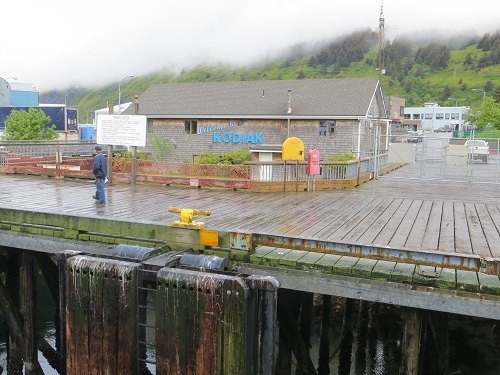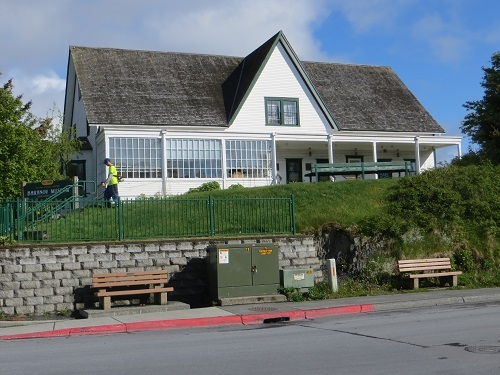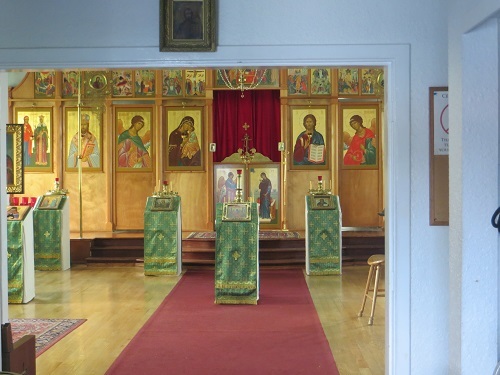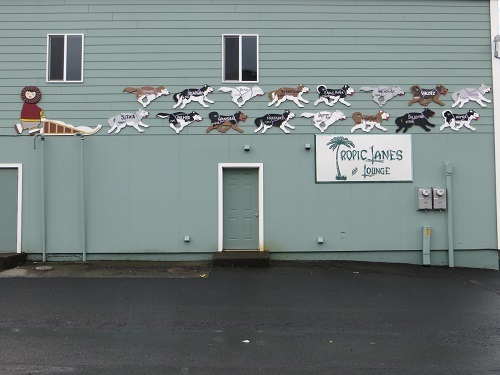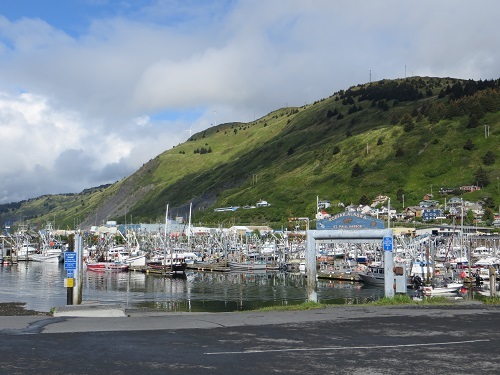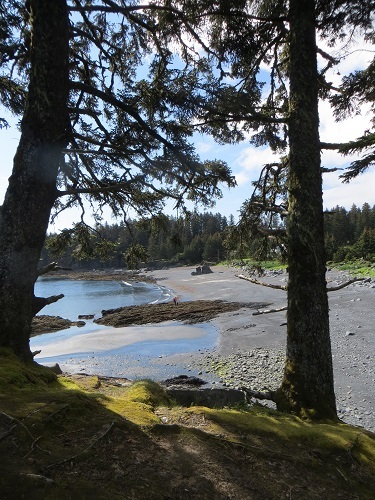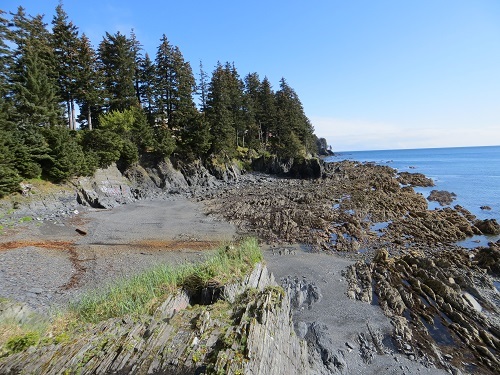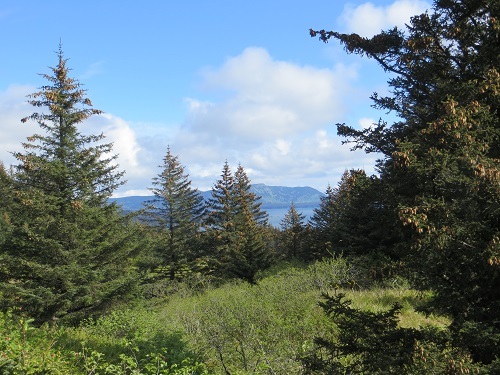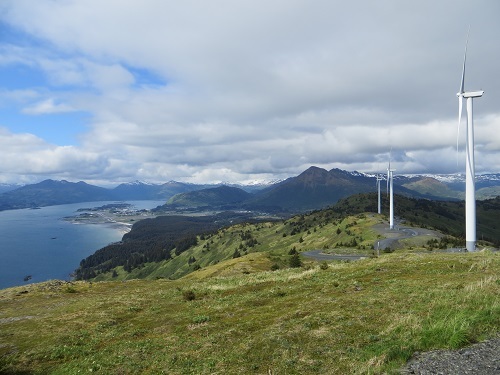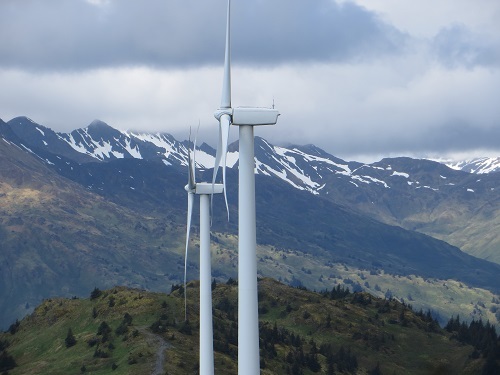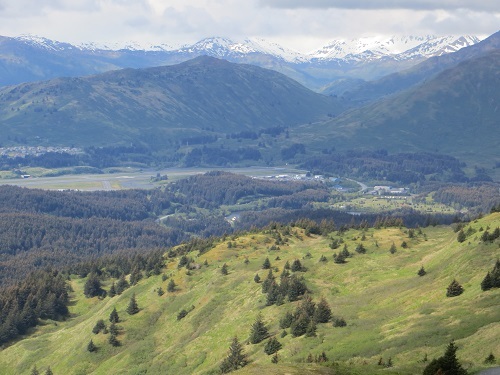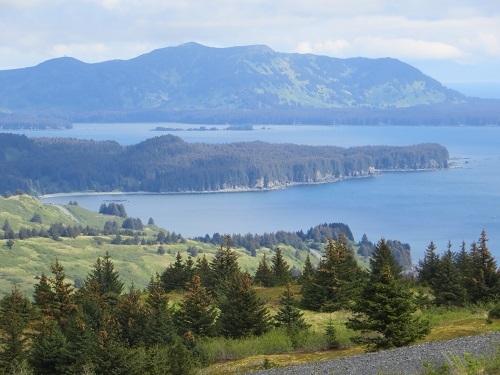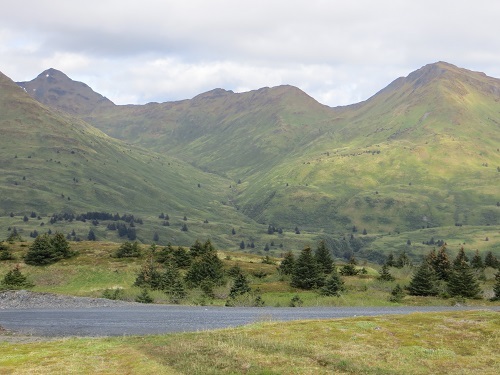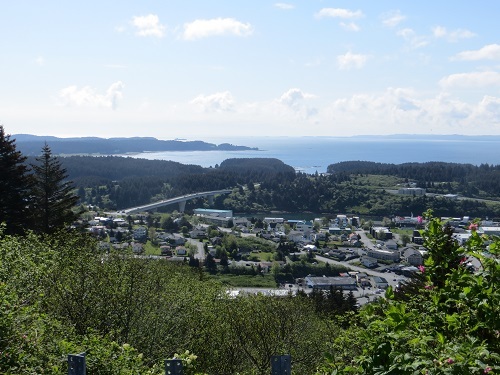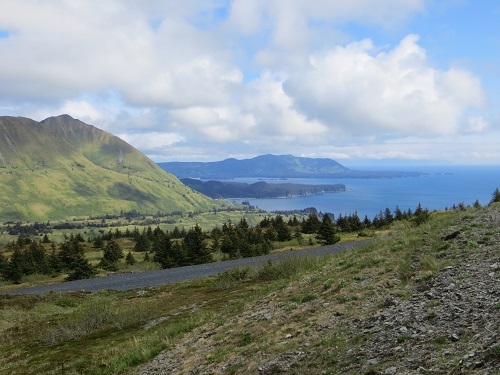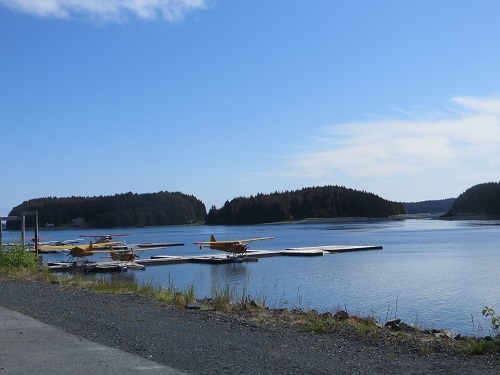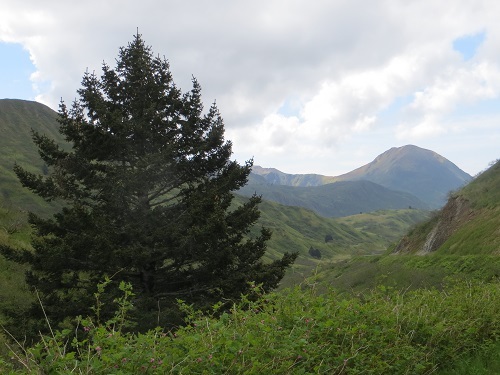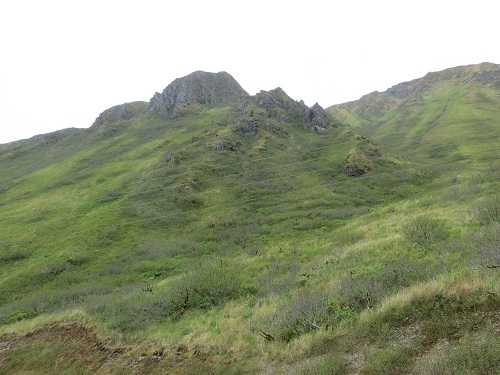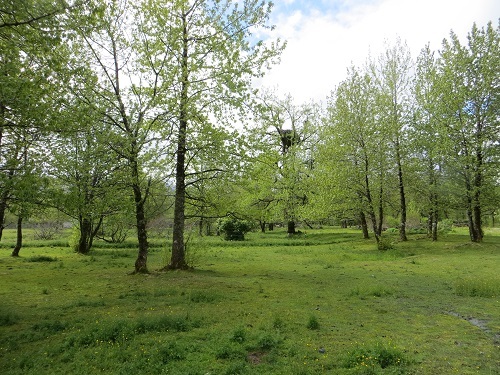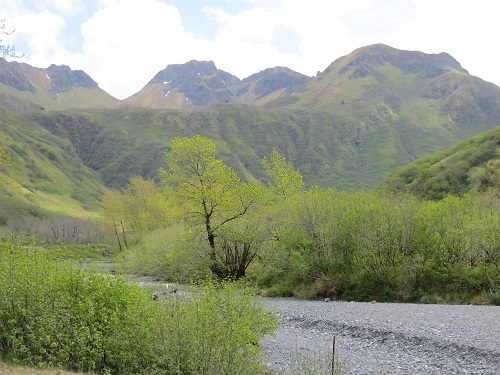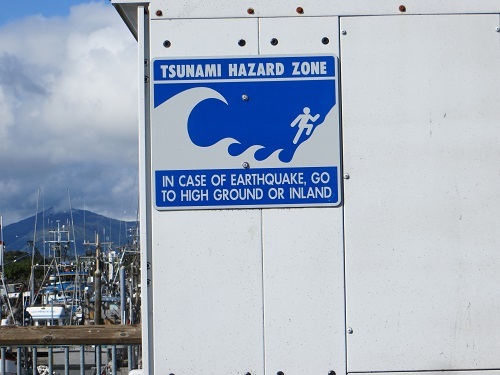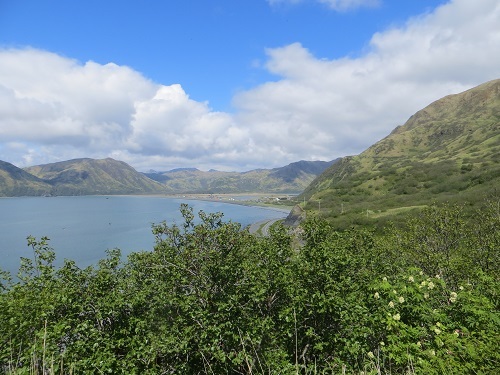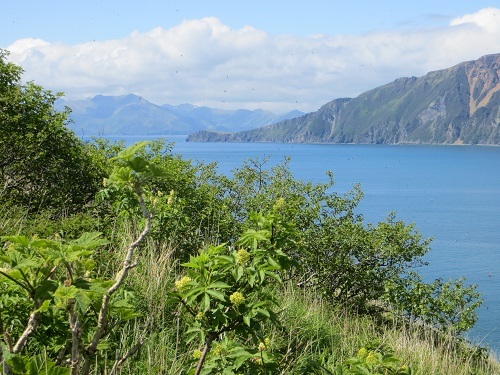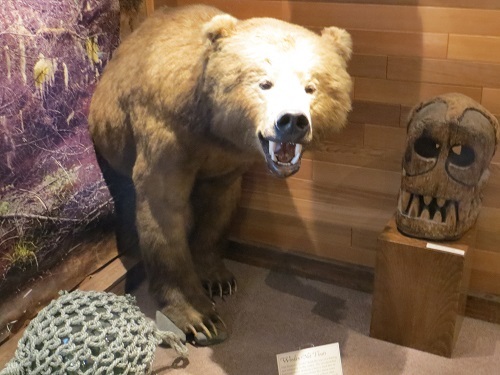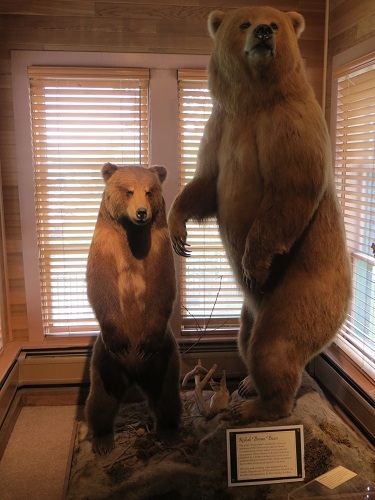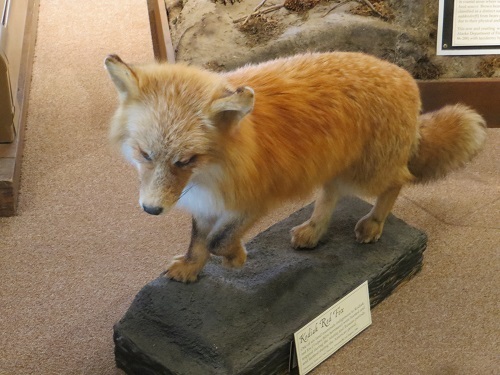Kodiak Island, 190 miles along the Alaska Peninsula from Homer, is indeed beautiful, carpeted in dark green spruce, with lighter green meadows and hillsides. Snow still streaks its peaks in early June. Not for nothing, is it called Alaska's emerald isle. In fact, the treeless sections resemble parts of Ireland or Scotland.
Apart from hosting the largest Coast Guard station in the U.S., featured in the reality TV series Deadliest Catch, and a cold-weather training camp for U.S. Navy Seals, it is also a main repository of America's Russian heritage from before 1867, when the U.S. bought Alaska's whole vast 586,412 square miles from Tsarist Russia for $7.2 million in what was sometimes called Seward's Folly.
Then-Secretary of State William Henry Seward negotiated the deal. The sum's about $110 million in today's dollars, although some put it as high as $17 billion when adjusted for the relative size of the U.S. economy then and now.
Kodiak town is home to the oldest Russian building in North America - and the oldest building in Alaska - the Russian-American Company Magazin otter pelt warehouse, built in 1808. It now houses the Baranov Museum, named after a long-serving company chief.
Many streets are named after Russians, many inhabitants with indigenous Alutiiq blood bear Russian family names, and the Russian Orthodox church, built in 1898, is a major landmark with its pretty twin blue cupolas.
The Alutiiq, related to the Yup'ik Inuit of the Bering Sea have lived here for 7,500 years and were doing just fine in their harsh environment, finding what they needed for food and clothes from land and sea animals until Russian fur trappers and traders arrived in 1784.
Then they were virtually enslaved by the Russian-American Fur Company which held their women and children hostage while forcing the men to trap sea otters for a pittance.
They numbered about 9,000 when the Russians arrived. A few decades later there were only 1,900 left. The rest had fallen victim to hard labour and European diseases like smallpox.
Sea otters were on the brink of extinction, too, in no small measure due to even worse depredations by the Americans after the purchase.
The Alutiiq, too, were worse off under the Americans, banned by missionaries from speaking their own language, with their children taken away from them to special schools under the guise of 'americanisation.' Today they are trying to revive their language and heritage. About 15 percent of the 14,000 islanders have Alutiiq blood.
The island is about 110 miles long, 60 miles at its widest, and seriously riven with inlets and fjords. We have over eight hours here before the good ship Tustumena resumes its trip westwards to the Aleutian Islands.
For $75 I've booked a four-hour tour of the island, but the lady can only start at 10 A.M., so I've two hours to kill and no cafés are open. One says 'open' and I sit down only to be told it, too, is closed. But the guy gives me a cup of tea and refuses to take money - a change from all the other cadgers I've so far met on the Alaska trip.
The only fly in the ointment is that the TV is on full blast with the insufferable Wolf Blitzer continuing his non-stop blitzkrieg of inane blather. Oy vey! But I can hardly ask the dispenser of free tea to change the channel.
And another
Meanwhile the great weather is following me. It was very grey and overcast when we docked at 7.45 A.M., the peaks hidden in clouds. Now, at 10 A.M., the clouds have parted, there's much blue, and the sun's shining brightly, gilding the cones at the top of the spruce trees.
From 1,400-foot Pillar Mountain there are superb views over town, peaks, sea and islands. But, alas, the powerful winds have incited man to plant a wind farm with turbines a-churning a-plenty on the ridge.
Views from atop Pilar Mountain
Kodiak is most famous for the Kodiak bear, the largest of the grizzlies, with males averaging 600 to 900 pounds. The very largest weigh in at 1,500 pounds and reach 10 feet standing. They've lived largely untroubled for generations, becoming a sub-species in their own right. They now number some 3,500.
Hunting is allowed outside Kodiak National Wild Life Refuge for what humans consider sustainability reasons. But why some idiot would want to shoot this magnificent creature and stick its head and skin on his wall or floor is beyond me.
My lady driver, however, says it's a better death than what awaits old bears, who have a life span of 30 years. As they become more ancient and weaker, their teeth no longer as effective, younger bears attack them and keep them from the best feeding grounds. In the end they die of starvation.
The best time for seeing bears near the shore is July and August during the salmon runs, but Lady Driver had a mother and two cubs cross the road right in a front of her just a couple of days ago.
We travel some 30 miles south of town, but there are no sightings today. Not to worry, though. Some of the animals I saw on Katmai were probably Kodiak bears, who swim across from the island.
We do see a huge 15-year-old eagle's nest, however, with the mother sitting on a nearby branch guarding her young. She may have two or three eaglets, but often only the first to hatch survives as he or she pushes the others out of the nest in competition for food.
The top alphas of land and bird carnivores here don't often clash, because there's no way an eagle can lift up a bear cub, let alone a 600-pound Kodiak male.
But Lady Driver once saw a bear kill two eagles. It had found and was guarding the corpse of a huge whale that had washed ashore, supping on it over days. One day, two hungry eagles came too close for their own comfort. The bear added eagle à la king to its whale steak rare that night.
She happens to glance at the fuel gauge and - surprise, surprise - notices that she forgot to fill up. So we turn back before reaching the Alaska Spaceport used for popping military satellites up into polar orbit, a state-owned enterprise known to its critics as the Alaska Space Pork.
And now the tsunami siren's just started howling. But again not to worry; it's the regular Wednesday 2 P.M. test - a reminder of the largest earthquake in North American history in 1964, a 9.2 magnitude temblor triggering a series of tsunamis that devastated Kodiak town.
A glance at a card under Lady Driver's steering wheel gives me another nasty jolt: Pickled Willys LLC - with a picture of a top-hatted herring knocking back a glass of liquor. Aaaagh, a crazed island castrator preserving severed members for posterity! But it's the card of a friend of hers who does indeed pickle real herrings.
And talking of weird fish - praise be the Lord! The maniacally card-snapping, head-jerking, hand-jumping psycho serial killer has not re-embarked on the Tustumena. Let him work his wonders on the good citizens of Kodiak as we ply westwards.
[Upcoming blog on Thursday: Down the Alaska Peninsula to Chignik and magnificent Castle Cape]
______________
By the same author: Bussing The Amazon: On The Road With The Accidental Journalist, available with free excerpts on Kindle and in print version on Amazon.
